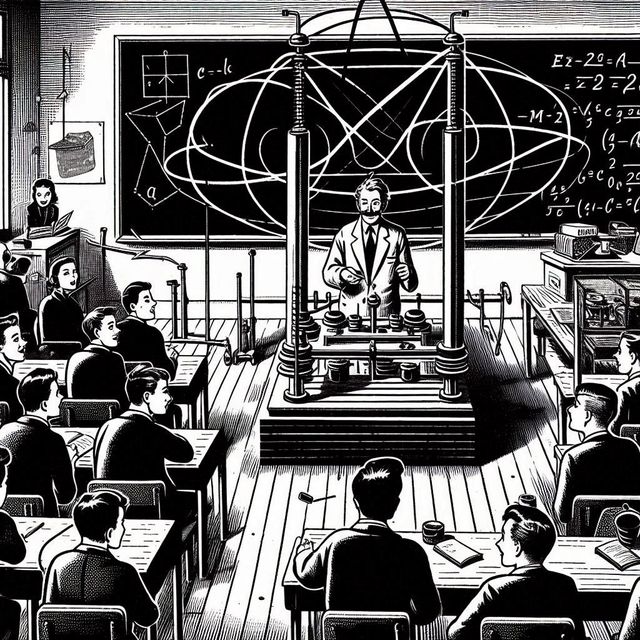-
Vijay Fafat
- Published on
This short story is written as a total spoof which reminded me of Martin Gardner’s “The No-Sided professor”, with a certain amount of snarky humor woven in.
A professor of physics conducts an experiment in his class to create “a space with infinite negative curvature”. In the professor’s lecture:
“[This experiment] concerns a branch of applied mathematics with which you are all familiar to a greater or lesser degree; a branch which has been given the name of Topology.” An earnest-looking student in the front row twisted a strip of mauve blotting paper into the form of a Moebius band, in an absent-minded fashion.”
[…]
We have seen that the evidence obtained from counting the number of visible stars suggests that the universe, or space, as it is popularly termed, possesses a negative curvature, rather as the back of a saddle is curved.
[…]
“We also saw that, as a result of this negative curvature, the volume of space within a given radius from any point of reference is greater than would be the case if the space were uncurved.”
[…]
“I will ask you to accept, then, that if the space in a given region is negatively curved, then the real volume of that space will be larger than its apparent volume. Conversely, if the space is positively curved, then its real volume will be less than it appears to be.”
[…]
“It follows, then, that if we could arrange for the space within a container to possess an infinite negative curvature, then the real volume of that container would necessarily be infinite. This, ladies and gentlemen, is precisely what I have done, and what I hope to demonstrate to you this morning.
Amidst some mild heckling and skeptical comments, the professors switches on the apparatus and creates a hole in space 3 feet above the ground but one which has no visible effects. Subsequently, in a very funny exchange of conversation about the nature of the hole, its effects, whether it really contains an infinite volume, whether its negative curvature can be used as a slide, whether it also has positive air pressure, a comical sequence of events leads to the entire class falling into the hole and disappearing. Subsequently, Albert, the “Chief Technical Assistant to the Physical Laboratory” comes in for clean-up, and finding no one in the class, turns off the apparatus and cleans up the scene…
The use of the name “Albert” and the throwing of a clock into the ‘space-time’ hole are cute touches, among others. And on reading about the class lowers a string of knotted scarves into the hole, I was reminded of a paper written much later by Gibbons on the same topic (“On lowering a rope in a black hole”, G. W. Gibbons, Nature Physical Science volume 240, page 77 (1972)).
